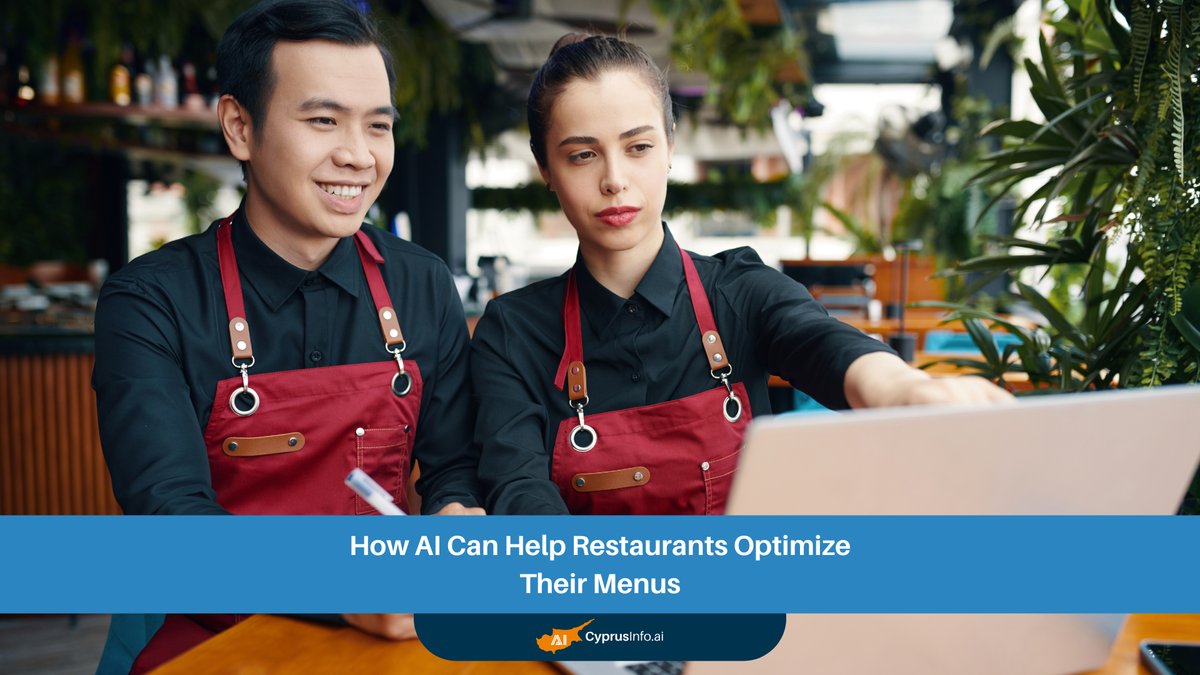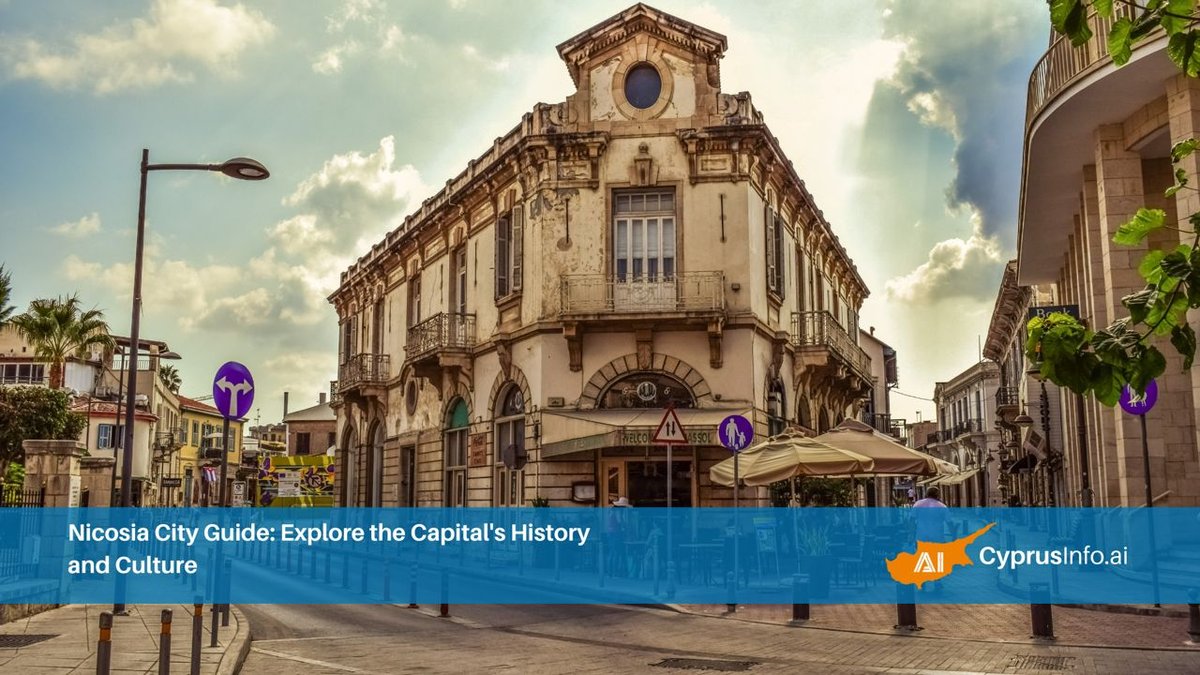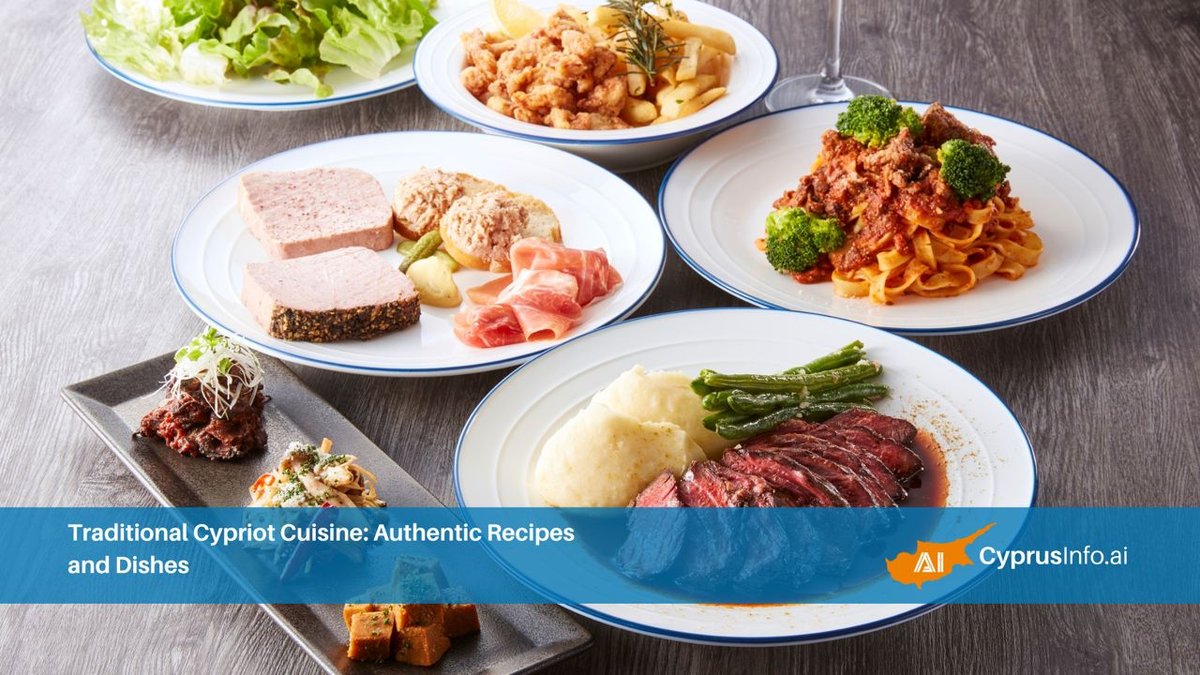In the fiercely competitive landscape of the modern restaurant industry, simply serving great food is often not enough. Owners and managers are constantly seeking innovative ways to boost profitability, enhance customer satisfaction, and streamline operations. Enter Artificial Intelligence (AI) – a powerful ally that is rapidly transforming how restaurants approach one of their most critical assets: the menu. This comprehensive guide will explore the profound impact of AI Restaurant Menu Optimization, delving into how intelligent systems can revolutionize everything from pricing strategies to personalized recommendations, ultimately driving unprecedented success. Through advanced analytics and predictive capabilities, AI Restaurant Menu Optimization offers a strategic edge that traditional methods simply cannot match.
The concept of AI Restaurant Menu Optimization is no longer a futuristic fantasy; it's a present-day reality offering tangible benefits. Restaurants grapple with fluctuating ingredient costs, changing consumer tastes, and the constant pressure to remain competitive. AI provides the tools to navigate these complexities with data-driven precision, ensuring that every dish on the menu contributes optimally to the bottom line and delights diners. Understanding and implementing effective strategies for AI Restaurant Menu Optimization is paramount for any establishment aiming to thrive in the digital age.
Understanding the Core of AI Restaurant Menu Optimization
At its heart, AI Restaurant Menu Optimization involves using artificial intelligence algorithms to analyze vast amounts of data related to a restaurant's operations, market trends, and customer behavior. This analysis then informs decisions about menu item selection, pricing, placement, and even promotional strategies. It’s about moving beyond intuition to embrace actionable insights derived from hard data, transforming how a restaurant crafts its culinary offerings.
What is AI Restaurant Menu Optimization?
AI Restaurant Menu Optimization is the systematic process of leveraging machine learning and data analytics to maximize the effectiveness of a restaurant's menu. This encompasses several critical areas:
Sales Data Analysis: Identifying top-performing dishes, slow movers, and items that pair well.
Cost Management: Tracking ingredient costs, labor, and overhead associated with each dish.
Customer Feedback: Analyzing reviews, preferences, and dietary trends.
Market Trends: Monitoring competitor pricing, popular cuisines, and seasonal demands.
By integrating these data points, AI can recommend optimal changes to the menu, ensuring profitability and relevance. This holistic approach makes AI Restaurant Menu Optimization a game-changer for businesses.
Traditional vs. AI-Powered Approaches to Menu Engineering
Historically, menu engineering relied on a combination of chef intuition, basic sales reports, and perhaps some manual calculations of food cost. Decisions were often subjective and slow to adapt.
Traditional vs. AI-Powered Menu Optimization
Traditional: Intuition-driven, slow adaptation, limited data scope, prone to human bias.
AI-Powered: Data-driven, real-time adaptation, comprehensive data analysis, objective recommendations, superior restaurant menu engineering AI.
With AI Restaurant Menu Optimization, algorithms can process thousands of transactions, analyze sentiment from online reviews, and even predict future trends based on historical data and external factors. This allows for proactive rather than reactive decision-making, setting a new standard for efficiency and foresight in menu management. The evolution to AI Restaurant Menu Optimization is a leap from guesswork to scientific precision.
"The future of dining isn't just about what's on the plate, but how intelligently that plate is conceived, priced, and presented. AI is the chef's new secret ingredient for strategic success." - Culinary Tech Analyst
Key Benefits of AI Restaurant Menu Optimization
The advantages of integrating AI into menu management are multifaceted, touching every aspect of a restaurant's operation and significantly impacting its bottom line and customer relationships. Here's a closer look at the primary benefits.
Enhanced Profitability: AI-Driven Menu Pricing & Food Cost Optimization AI
One of the most immediate and impactful benefits of AI Restaurant Menu Optimization is its ability to directly influence a restaurant's financial health. AI excels at analyzing complex financial data to pinpoint areas for improvement.
AI-Driven Menu Pricing: AI algorithms can analyze ingredient costs, preparation time, customer willingness to pay, competitor pricing, and even peak demand times to suggest optimal prices for each menu item. This goes beyond simple markups, factoring in psychological pricing and perceived value. For instance, AI might identify that a slight price increase on a highly popular dish won't deter sales but significantly boosts profit margins. This sophisticated approach to AI-driven menu pricing ensures maximum revenue generation without alienating customers.
Food Cost Optimization AI: Ingredients are a major expense for any restaurant. AI can track inventory, predict demand for specific ingredients, identify potential waste, and even suggest alternative suppliers or seasonal ingredient swaps to reduce costs without compromising quality. By minimizing spoilage and optimizing purchasing, food cost optimization AI directly contributes to higher profitability. This proactive management is a cornerstone of effective AI Restaurant Menu Optimization.
Learn how AI inventory management revolutionizes stock control.
Superior Customer Experience: Personalized Menu Recommendations AI
In an era where personalization is king, AI allows restaurants to offer a truly bespoke dining experience, fostering loyalty and encouraging repeat visits.
Personalized Menu Recommendations AI: Imagine a digital menu that learns from a customer's past orders, dietary preferences, and even real-time feedback. AI can suggest dishes they are most likely to enjoy, guiding them through the menu. For first-time visitors, it can leverage data from similar customer profiles or popular local dishes. This level of personalized interaction, driven by personalized menu recommendations AI, elevates the dining experience beyond expectation. It’s a crucial aspect of modern AI Restaurant Menu Optimization. For more insights on understanding customer behavior, see our AI guide to understanding Cyprus consumer behavior.
Dynamic Menu Displays: AI can power digital menus that adapt based on time of day, current ingredient availability, or even local events, ensuring guests always see the most relevant and appealing options. This dynamic presentation further enhances customer engagement.
Operational Efficiency: AI for Inventory Management Restaurants
Beyond the front-of-house, AI significantly enhances back-of-house operations, leading to smoother workflows and reduced waste.
AI for Inventory Management Restaurants: Precise inventory control is vital. AI systems can predict ingredient needs based on sales forecasts, seasonal variations, and even weather patterns, ensuring optimal stock levels. This minimizes waste from spoilage and reduces the risk of running out of popular items. This is particularly beneficial for managing complex supply chains efficiently. Efficient AI for inventory management restaurants is critical for cost control and freshness.
Explore revolutionizing stock control with AI inventory management.Waste Reduction: By accurately forecasting demand and managing inventory, AI dramatically reduces food waste, leading to cost savings and a more sustainable operation. This is a significant advantage of comprehensive AI Restaurant Menu Optimization. For broader insights on optimizing business operations, consider exploring how AI workflow automation can revolutionize your company's operations.
Advanced Strategies for AI Restaurant Menu Optimization
To truly harness the power of AI, restaurants can implement more sophisticated strategies that leverage predictive capabilities and deep data analysis. These strategies move beyond basic recommendations to create a highly responsive and profitable menu ecosystem.
Dynamic Menu Pricing Strategies: Responding to Real-Time Demands
Just as airlines and hotels adjust prices based on demand, restaurants can implement dynamic menu pricing strategies with AI. This involves real-time adjustments to prices based on various factors:
Factor | How AI Responds | Benefit |
|---|---|---|
Time of Day/Week | Lower prices during off-peak hours, higher during peak dinner rush. | Increased occupancy, maximized revenue per cover. |
Ingredient Cost Fluctuations | Adjust prices to maintain desired profit margins on specific dishes. | Consistent profitability amidst volatile supply chains. |
Competitor Pricing | Monitor local competitors and suggest competitive pricing. | Maintain market share, avoid under/over-pricing. |
Demand Elasticity | Identify which dishes can tolerate price changes without affecting sales volume. | Optimize pricing for maximum revenue. |
These dynamic menu pricing strategies ensure that a restaurant's menu is always optimized for current market conditions, maximizing revenue opportunities and contributing to robust AI Restaurant Menu Optimization.
Predictive Analytics Restaurant Menu: Forecasting Trends and Preferences
AI's ability to forecast is invaluable. Predictive analytics restaurant menu capabilities allow establishments to anticipate future trends and customer preferences, staying ahead of the curve.
Seasonal Demand Forecasting: Predict which dishes will be popular during specific seasons or holidays based on historical data. This helps in pre-ordering ingredients and adjusting marketing efforts. This precision is a key component of effective AI Restaurant Menu Optimization.
Emerging Cuisine Trends: Analyze social media, food blogs, and competitor menus to identify new culinary trends that could be incorporated into the menu. This forward-looking approach ensures the menu remains fresh and exciting. For businesses looking to identify new opportunities, exploring how AI identifies new business opportunities can provide further insights.
Ingredient Shelf-Life Prediction: Reduce waste by predicting the shelf-life of various ingredients under specific storage conditions, informing purchasing and usage plans. This is a critical aspect of AI for inventory management restaurants.
Customer Preference Analysis AI: Deep Diving into Diner Data
Understanding what customers truly want is at the core of successful menu design. Customer preference analysis AI goes beyond basic order history.
Sentiment Analysis: AI can analyze customer reviews and feedback from various platforms (Google, Yelp, social media) to understand public sentiment towards specific dishes, ingredients, or even service elements. This helps identify strengths and weaknesses. Mastering AI sentiment analysis for brand growth is crucial for this.
Dietary Trend Identification: Identify rising trends in dietary preferences (e.g., veganism, gluten-free, keto) to ensure the menu caters to a broader audience. This helps in attracting new customer segments and ensures proactive AI in hospitality menu planning.
Cross-Selling and Upselling Opportunities: AI can identify popular dish pairings or suggest premium add-ons that customers are likely to purchase, based on their order history and similar customer profiles. This boosts average transaction value and demonstrates the powerful capabilities of AI Restaurant Menu Optimization. Insights from AI in creating customer segments can further refine these strategies.
Implementing AI Restaurant Menu Optimization: A Step-by-Step Guide
Adopting AI for menu optimization might seem daunting, but a structured approach can make the transition smooth and effective. Successful AI Restaurant Menu Optimization requires careful planning and execution.
1. Data Collection and Integration
The foundation of any AI system is data. Restaurants must collect comprehensive data from various sources:
POS Systems: Sales data (dish popularity, time of order, price, modifiers).
Inventory Management: Ingredient costs, waste levels, supplier information.
Customer Loyalty Programs: Individual customer preferences, order history, dietary needs.
Online Reviews & Social Media: Sentiment, feedback on specific dishes.
External Data: Local events, weather forecasts, competitor pricing.
Integrating these disparate data sources into a centralized system is crucial for the AI to perform meaningful analysis. This step is fundamental for robust AI Restaurant Menu Optimization. For deeper insights into leveraging data, consider AI data analytics for business.
2. Choosing the Right AI Tools and Platforms
The market offers a growing number of AI solutions tailored for the hospitality industry. Key features to look for include:
Ease of Integration: Compatibility with existing POS and inventory systems.
Customization: Ability to adapt to a restaurant's unique menu and operational structure.
Reporting & Analytics: Clear, actionable insights and visualizations.
Scalability: Can grow with the business.
Support: Reliable customer support and training.
Investing in the right platform is critical for successful AI Restaurant Menu Optimization. For guidance on selecting the best software, explore our AI guide to the best CRM software for Cyprus SMEs.
3. Training and Adaptation
Once the AI system is in place, it requires continuous training and adaptation. This involves:
Initial Data Training: Feeding historical data to the AI to establish baseline understanding.
Monitoring Performance: Regularly reviewing AI recommendations and their impact on sales and profitability.
Fine-Tuning Algorithms: Adjusting parameters and feedback loops to improve accuracy and relevance over time.
Staff Training: Educating staff on how to use the new tools and interpret AI-generated insights.
This iterative process ensures that the AI Restaurant Menu Optimization system becomes increasingly effective and integrated into daily operations.
The Role of AI in Hospitality Menu Planning
AI's influence extends beyond mere optimization; it redefines the entire process of hospitality menu planning, making it more strategic and responsive.
Beyond the Plate: Supply Chain and Sourcing
AI in hospitality menu planning isn't just about what's on the menu; it's also about the intricate logistics behind it. AI can:
Optimize Supplier Relationships: Analyze supplier performance, pricing, and reliability to recommend the best sourcing options.
Predict Supply Disruptions: Use external data (weather, geopolitical events) to forecast potential supply chain issues and suggest alternative ingredients or suppliers.
Minimize Waste in Production: By accurately predicting ingredient usage, AI helps kitchens order precisely what they need, minimizing spoilage and overstocking, a key aspect of food cost optimization AI.
Seasonal and Special Event Planning
AI's predictive capabilities are invaluable for planning menus for seasonal changes or special events:
Seasonal Menu Transitions: Recommend new seasonal dishes based on ingredient availability, historical popularity, and current trends, making the transition seamless and data-driven.
Event-Specific Menus: Suggest tailored menus for holidays, private events, or themed nights, ensuring maximum appeal and profitability. This directly feeds into sophisticated AI Restaurant Menu Optimization.
Revenue Management Restaurant AI: Maximizing Every Dish
Revenue management restaurant AI takes menu optimization to the next level by focusing on maximizing total revenue through strategic pricing, promotions, and inventory control. It's about selling the right product to the right customer at the right price, at the right time.
Optimizing Promotions and Discounts
AI can analyze past promotional performance, customer segments, and demand patterns to design highly effective promotions:
Targeted Discounts: Offer personalized discounts to specific customer segments or loyalty program members based on their purchasing history and likelihood to respond.
Optimal Timing: Determine the best times to run promotions (e.g., happy hour deals during slow periods) to maximize customer traffic and revenue without cannibalizing full-price sales.
Offer Performance Prediction: Predict the likely success of a new promotion before it's launched, allowing for adjustments to be made. This is a critical aspect of strategic AI Restaurant Menu Optimization. For insights on optimizing marketing ROI, see AI analytics for marketing ROI.
Understanding Elasticity of Demand
A sophisticated aspect of revenue management restaurant AI is understanding how sensitive demand for a dish is to changes in its price. AI can perform this analysis with remarkable accuracy:
Inelastic Items: Identify dishes for which demand remains relatively stable even with price increases (e.g., signature dishes, staples). These can command higher prices.
Elastic Items: Pinpoint dishes where a small price change significantly impacts demand. For these, AI might suggest strategic discounting or promotional bundling to boost sales volume.
This deep understanding of demand elasticity allows restaurants to fine-tune their pricing for every single item, ensuring optimal profitability. This is where AI-driven menu pricing truly shines as a core component of effective AI Restaurant Menu Optimization.
Challenges and Considerations in AI Restaurant Menu Optimization
While the benefits are clear, implementing AI Restaurant Menu Optimization comes with its own set of challenges and considerations that need careful navigation.
Data Privacy and Security
Collecting and analyzing vast amounts of customer data raises important questions about privacy and security. Restaurants must:
Comply with Regulations: Adhere to data protection laws like GDPR, ensuring customer data is handled responsibly and transparently. For guidance on data protection, refer to an AI guide to Cyprus's data protection laws (GDPR).
Secure Data Infrastructure: Invest in robust cybersecurity measures to protect sensitive customer and operational data from breaches. Fortifying defenses with AI cybersecurity for businesses is essential.
Transparency: Clearly communicate to customers how their data is being used to enhance their dining experience.
Initial Investment and Integration
Adopting AI technology requires an initial financial investment in software, hardware, and potentially consulting services. Integrating new AI systems with existing POS, inventory, and other operational software can also be complex. However, the long-term ROI from optimized menus, reduced waste, and increased revenue often far outweighs the initial costs, making AI Restaurant Menu Optimization a worthwhile endeavor.
Maintaining the Human Touch
While AI provides data-driven insights, the human element remains crucial. Chefs and managers must interpret AI recommendations, applying their culinary expertise and understanding of the restaurant's brand and customer base. The goal of AI Restaurant Menu Optimization is to augment human decision-making, not replace it. The art of cooking and hospitality thrives on creativity and human connection, which AI should support, not diminish.
CyprusInfo.ai: Your Partner in AI Restaurant Menu Optimization
At CyprusInfo.ai, we understand the unique challenges and opportunities facing restaurants today. Our platform is designed to empower businesses with cutting-edge AI solutions, helping you navigate the complexities of the market and achieve sustainable growth. We specialize in transforming raw data into actionable insights, making AI Restaurant Menu Optimization accessible and effective for establishments of all sizes.
How CyprusInfo.ai Can Help Your Restaurant Thrive
Our AI-powered tools provide a comprehensive suite of services to enhance your menu strategies:
Market Research & Trend Analysis: Leverage our advanced AI market research capabilities to identify emerging culinary trends, competitor strategies, and local demand patterns relevant to your restaurant. This intelligence directly informs your AI in hospitality menu planning.
Data Analytics & Predictive Modeling: Integrate your sales, inventory, and customer data to gain deep insights into dish performance, ingredient costs, and customer preferences. Our predictive models can forecast demand, helping you optimize purchasing and reduce waste, a core function of food cost optimization AI.
Personalized Recommendations & Customer Segmentation: Utilize AI to understand individual customer behaviors and create segmented marketing strategies. This allows for AI customer retention strategies and personalized menu suggestions, improving satisfaction and loyalty.
Competitive Analysis: Understand your position in the market with detailed AI competitive analysis, helping you refine your pricing and menu offerings to stand out.
Operational Efficiency Tools: Streamline your back-of-house operations with AI-driven inventory management and supply chain optimization features, ensuring smooth workflows and reduced operational costs. This is crucial for effective AI for inventory management restaurants.
With CyprusInfo.ai, you gain a powerful partner dedicated to helping your restaurant implement sophisticated AI Restaurant Menu Optimization strategies, translating data into delectable dishes and enhanced profits. Our tools empower you to make smarter, faster decisions, ensuring your menu is always perfectly aligned with both your business goals and your customers' desires.
Frequently Asked Questions About AI Restaurant Menu Optimization
How exactly does AI determine optimal menu pricing?
AI analyzes various factors including ingredient costs, preparation time, historical sales data, competitor pricing, customer price sensitivity (elasticity of demand), and even external factors like local events or weather. It then uses complex algorithms to suggest prices that maximize profit margins without deterring sales volume, going beyond simple cost-plus pricing to implement sophisticated AI-driven menu pricing.
Can AI help identify new menu items to add?
Absolutely. AI can analyze emerging food trends, popular cuisines in your area, ingredients that are performing well, and customer feedback to suggest innovative new dishes. This is a key aspect of advanced AI in hospitality menu planning and proactive AI Restaurant Menu Optimization.
Is AI only for large restaurant chains, or can small businesses benefit?
While large chains often have more data, AI solutions are increasingly scalable and accessible for small to medium-sized restaurants. Even with more limited data, AI can provide valuable insights into sales patterns, customer preferences, and food cost optimization AI, offering a significant competitive edge.
How does AI handle fluctuating ingredient costs for menu optimization?
AI systems can track real-time ingredient costs from suppliers. When a significant price change occurs, the AI can alert management and suggest immediate adjustments to menu prices or recommend alternative ingredients to maintain desired profit margins. This proactive approach supports continuous AI Restaurant Menu Optimization.
What kind of data does a restaurant need to start with AI menu optimization?
Ideally, a restaurant needs historical sales data from its POS system, current inventory and purchasing data, and any available customer feedback or loyalty program data. The more comprehensive the data, the more accurate and insightful the AI Restaurant Menu Optimization will be.
Will AI replace the role of a chef or menu designer?
No, AI is a tool to assist, not replace. Chefs and menu designers will continue to be essential for creativity, culinary expertise, and maintaining the restaurant's unique identity. AI provides data-driven insights to inform and enhance their decisions, making their work more strategic and profitable through sophisticated restaurant menu engineering AI.
How does AI help with personalized menu recommendations?
AI analyzes a customer's past orders, preferences (e.g., likes, dislikes, dietary restrictions), and even behavior patterns of similar customers. Based on this, it can suggest dishes that are most likely to appeal to them, enhancing their dining experience through personalized menu recommendations AI.
What are the security implications of using AI for menu data?
Data security is paramount. Restaurants must choose AI providers with robust cybersecurity measures, ensure compliance with data protection regulations (like GDPR), and implement strong internal data handling protocols to protect sensitive business and customer information. Secure practices are vital for any AI Restaurant Menu Optimization system.
Can AI predict customer demand for specific dishes?
Yes, through predictive analytics restaurant menu capabilities, AI can forecast demand for individual dishes by analyzing historical sales, seasonal trends, promotions, local events, and even weather patterns. This helps optimize ingredient ordering and kitchen preparation, reducing waste and ensuring availability.
What's the typical ROI for implementing AI Restaurant Menu Optimization?
The ROI can vary widely based on the restaurant's size, initial investment, and how effectively the AI is utilized. However, common benefits include increased profit margins due to optimized pricing and reduced food waste, higher customer satisfaction leading to repeat business, and improved operational efficiency. Many restaurants see a significant return within the first year or two due to enhanced revenue management restaurant AI.
Conclusion: The Future is Intelligent: AI Restaurant Menu Optimization
The journey through the world of AI Restaurant Menu Optimization reveals a future where culinary excellence is seamlessly integrated with data-driven intelligence. From sophisticated AI-driven menu pricing to hyper-targeted personalized menu recommendations AI, and from efficient food cost optimization AI to proactive predictive analytics restaurant menu, AI offers a transformative toolkit for the modern restaurant. It empowers owners and chefs to make decisions that are not just intuitive but strategically sound, leading to enhanced profitability, unparalleled operational efficiency, and a consistently superior customer experience. Embracing AI Restaurant Menu Optimization is no longer an option but a strategic imperative for any restaurant striving to thrive and lead in today's dynamic hospitality industry. The intelligent menu is here, and it's set to redefine what's possible in dining.



